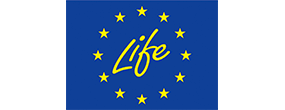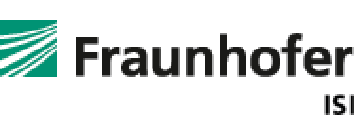Overview
Final energy consumption in Spain has been on a downward trend since 2007, not without fluctuations because of the effects of the different crises that have occurred up to the present. Notably, the recent impacts of COVID-19 and the energy crisis intensified in 2022 by the Russian invasion of Ukraine stand out. These crises have been followed by periods of economic recovery, resulting in disruptions to economic activity and energy demand. After the upturn in 2021 due to the post-COVID-19 recovery, consumption (including climate correction) has remained virtually stable (~79 Mtoe) in 2022. This consumption is 4% below the pre-COVID level and 4% above the level in 2000. Throughout the 2000–2022 period, transport remains dominant, accounting for 41.2% of consumption in 2022. The buildings sector, residential and non-residential, represents 32% of consumption, of which 59% corresponds to dwellings. Industry has lost representativeness, both in terms of consumption and its contribution to GDP, in line with the tertiarization of the economy, reaching 23% of consumption in 2022, 9 pp lower than in 2000.
Figure 1: Final energy consumption by sector (with climatic corrections)
Source: ODYSSEEAccording to the ODEX index, global energy efficiency has progressed at a rate of 1.4%/year between 2000 and 2022. The residential sector leads the progress (2.0%/year), driven by technological and legislative developments in building and equipment, to which is added the effect of retrofitting existing housing. It is followed by the industrial sector (1.5%/year), although most of this improvement occurred prior to the 2008 crisis, with progress of 2.4%/year between 2000 and 2008. The transport and services sectors have shown slower progress, with respective improvements of 1.2%/year and 0.9%/year since 2000. However, these sectors have evolved more favorably since 2014, especially transport (1.3%/year), in contrast to the first two sectors, whose progress has slowed down.
Figure 2: Technical Energy Efficiency Index
Source: ODYSSEEThe first National Integrated Energy and Climate Plan, PNIEC 2021-2030 (Spanish NECP), submitted on 31 March 2020 to the European Commission, is a planning instrument originating from Regulation (EU) 2018/1999 on Energy and Climate Governance. This first Plan assumed efficiency improvement targets for 2030 of 39.5% in terms of primary energy and 41.7% in terms of final energy (Art.3, Energy Efficiency Directive (EED) 2012/27/EU; 2018/2002). It also set a cumulative final energy savings target of 36.8 Mtoe between 2021 and 2030 (Art.7, EED 2012/27/EU; 2018/2002/EU) for which 10 sectoral measures out of a total of 17 efficiency measures were envisaged. In June 2023, the draft of the first update of the PNIEC as required by Regulation (EU) 2018/1999 (Art.14) was submitted to the Commission. The new PNIEC, approved by Royal Decree 986/2024 of 24 September, revises the previous targets upwards. Thus, the final energy efficiency improvement target is increased to 44% (Art.4 DEE 2023/1791). It also raises the final energy savings target to 53.5 Mtoe (Art. 8, EED 2023/1791/EU). This target should be achieved through the implementation of alternative measures in combination with the mechanisms that can be articulated within the National System of Energy Efficiency Obligations (SNOEE) with the resources of the National Energy Efficiency Fund (FNEE) and with the implementation of energy saving certificates. In its efficiency dimension, the new Plan presents 23 complementary measures, including those promoted by the Recovery Plan, the National System of Energy Efficiency Obligations, the Energy Saving Certificates, as well as alternative measures. 15 of these measures have a sectoral focus.
Table 1: Sample of cross-cutting measures
| Measures | NECP measures | Description | Expected savings, impact evaluation | More information available |
|---|---|---|---|---|
| National Energy Efficiency Fund (NEEF) | Yes | The National Energy Efficiency Fund (FNEE) aims to finance mechanisms for economic and financial support, technical assistance, training, information, and other measures addressed at increasing energy efficiency in various energy-consuming sectors, so that they contribute to achieving the target set by the National System of Energy Efficiency Obligations (SNOEE), in accordance with the provisions of the Energy Efficiency Directive (Art. 7, EED 2018/2002/EU, Art. 8, EED 2023/1791/EU). This Fund is attached to the Ministry for the Ecological Transition and Demographic Challenge (MITERD) through the Secretary of State for Energy and is managed by IDAE. | High | Link |
| Law 7/2021, of 20 May, on Climate Change and Transition | Yes | This Law in force since 22 May 2021 aims to ensure compliance by Spain with the objectives of the Paris Agreement and facilitate the decarbonization of the Spanish economy and its transition to a circular model. The Law establishes a series of minimum objectives regarding the reduction of GHG emissions, penetration of renewables and improvement of energy efficiency. Specifically, in the field of efficiency, the aim is to reduce primary energy consumption by at least 39.5%. All these objectives may be revised upwards. The law includes as planning instruments to address the energy transition the National Integrated Energy and Climate Plan (Spanish NECP) and the Decarbonization Strategy for 2050 of the Spanish Economy. It also promotes a series of measures to achieve the established objectives. Among these measures, those aimed at energy efficiency stand out, with special emphasis on buildings and transport. | High | Link |
| System of Energy Savings Certificates (RD 36/2023) | Yes | Through Royal Decree 36/2023, of 24 January, and within the scope of the National System of Energy Efficiency Obligations (SNOEE), a system of certificates is established by which it is possible to achieve energy savings through the presentation of Energy Savings Certificates (CAE). The purpose of this CAE System is to contribute to the fulfilment of the final energy savings objective set according to the Energy Efficiency Directive (Art.7, EED 2018/2002/EU, Art. 8, EED 2023/1791/EU). These CAE must reflect the annual final energy savings recognized because of investments in energy efficiency actions, which must comply with the principles and methodology for calculating savings indicated in Annex V of the DEE. | High | Link |
Buildings
Between 2000 and 2022, energy consumption in residential buildings (including climate correction) grew by 1%/year, reaching 14.9 Mtoe in 2022. This growth is mainly driven by electricity consumption (+2.4%/year), boosted by the penetration of electrical equipment, the increasing use of heat pumps in heating, and more recently, ICT technologies enabled by the digitalization of households. Two-thirds of energy consumption is concentrated on heating (39%) and appliances (27%). Domestic hot water is the next most significant use (19%), while air conditioning accounts for just over 1%. Unit energy consumption for heating (koe/m²) has shown an erratic trend over the period, with a downward trend (-1.5%/year), reaching 3.7 koe/m² in 2022. Since 2000 electrical equipment (including lighting) has increased its unit energy consumption (toe/dwelling) (+1.6%/year), peaking in 2010 and accounting for 54% of consumption (excluding heating) in 2022. Unit consumption of other uses, except air conditioning (+5.4%/year), has remained stable, with slight decreases between 1 and 1.5%/year.
Figure 3: Energy consumption of household space heating per m2 (with climatic corrections)
Source: ODYSSEE; ambient heat included.Figure 4: Energy consumption per dwelling by end-use (except space heating)
Source: ODYSSEEIn the period 2000 -2022, energy consumption in the residential sector increased by 2.2 Mtoe, driven by the rise in the number of occupied dwellings (+5.4 Mtoe) and higher comfort levels (+3.9 Mtoe) associated with domestic equipment and a shift toward larger homes. These effects were partially offset by energy savings (-5.9 Mtoe) resulting from efficiency improvements in housing and domestic equipment, supported by stricter standards and energy rehabilitation measures promoted through various national programmes, along with the contribution of favorable weather conditions (-1.1 Mtoe).
Figure 5: Main drivers of the energy consumption variation in households
Source: ODYSSEE; ambient heat included.Between 2000 and 2011, electricity consumption (toe/m²) in the services sector grew faster (1.7%/year) than the total consumption (1.2%/year). Both indicators then reversed their trend, with a sharper fall under the impact of the 2008 crisis. In 2014, the trend shifted again, continuing until 2020, with decreases of 1%/year and 3%/year in total and electricity unit consumption, respectively. Since 2020, coinciding with the post-COVID-19 recovery, both indicators have improved by around 5%/year. Overall, the electricity indicator has evolved more favorably since 2011, with a threefold improvement (-1.8%/year), explained by the adoption of more efficient electrical equipment, particularly in energy-intensive sectors, and energy management systems.
Figure 6: Energy and electricity consumption per m² in services (with climatic corrections)
Source: ODYSSEEIn the buildings sector, the actions implemented follow the EU guidelines, particularly the Directives on Energy Efficiency (EED) and Buildings (EPDB). Regarding this latter directive, in recent years significant progress has been made in its transposition through different regulatory provisions that enhance the levels of efficiency requirements such as the Technical Building Code (Royales Decree 732/2019, 450/2022), the Regulation of Thermal Installations in Buildings (Royal Decrees 238/2013, 178/2021) and the Energy Certification of buildings (Royal Decrees 235/2013, 309/2021). Concerning the first directive, several measures have been implemented in accordance with articles 4, 5, 6 and 7. These include the Long-Term Strategy for Energy Rehabilitation in buildings in Spain (ERESEE 2020), measures aimed at the energy renewal of public buildings, such as the Programmes PIREP (Local and Autonómico), the Energy Transition Plan in the General State Administration (AGE) and the AGE Green Public Procurement Plan (PCPE), 2018-2025. Likewise, there are support measures, both legislative and economic, for rehabilitation in general, such as Law 10/2022 of 14 June, the PREE and PREE 5000 programmes, as well as the Aid programmes for residential rehabilitation and social housing (Royal Decree 853/2021).
Table 2: Sample of policies and measures implemented in the building sector
| Measures | NECP measures | Description | Expected savings, impact evaluation | More information available |
|---|---|---|---|---|
| Individual metering of individual consumption in heating installations of buildings (RD 736/2020) | No | Measure addressed to the establishment of the requirements and obligations related to the accounting of individual heating and cooling consumptions that the centralized thermal installations of new and existing buildings must meet. | High | Link |
| Aid programme for energy rehabilitation in existing buildings in municipalities with demographic challenges (PREE 5000) | Yes | Programme within the framework of the Recovery Plan (C2.I04), coordinated by the IDAE, which is responsible for monitoring the aid, managed by the Autonomous Communities, the direct beneficiaries of the aid for distribution among the final recipients of the aid, through the publication of the corresponding calls for applications in their territories. Regulated by Royal Decree 691/2021 of 3 August, the programme aims to boost the sustainability of existing buildings by means of actions on the thermal envelope, thermal and lighting installations in existing buildings in municipalities with demographic challenges, providing continuity to previous programmes (PAREER-CRECE, PAREER II, PREE). The Programme places special attention to the granting of aid to vulnerable groups and those affected by energy poverty. In addition, it seeks to promote the actions undertaken by renewable energy communities or citizen energy communities. It has a total budget of €201.5 M | Medium | Link |
| Programs for the rehabilitation and promotion of social and efficient housing (RD 853/2021) | Yes | These programmes, regulated by Royal Decree 853/2021, of 5 October, aim to contribute to the fulfilment of the objectives of the Recovery Plan in the areas of residential rehabilitation and construction of social housing, specifically in relation to investments C02.I01 "Rehabilitation programme for economic and social recovery in residential environments" and C02.I02 "Programme for the construction of housing for social rental in energy efficient buildings", both included within the component 2 "Implementation of the Spanish Urban Agenda: Urban rehabilitation and regeneration plan" | High | Link |
| Law 10/2022 on measures to promote rehabilitation in the context of the Recovery Plan | Yes | This Law aims to address the challenges in terms of rehabilitation and improvement of the housing stock. To achieve this, it includes different measures: introduction of three new tax deductions aimed at promoting rehabilitation in habitual residences and residential buildings; improvements in the regime of communities of owners by modifying the Law on horizontal property applicable to rehabilitation works that contribute to improving the energy efficiency of the building, establishing a simple majority regime for the performance of such works; modification of the Land and Urban Rehabilitation Law in order to strengthen the powers of communities of owners with full legal capacity for credit operations related to both the rehabilitation of buildings and compliance with the duty of conservation; and creation of a line of guarantees so that credit institutions can offer financing for rehabilitation actions of residential buildings. | High | Link |
| Energy Transition Plan in the General State Administration (AGE) | Yes | This Plan forms a global package of €1,070 M that aims to modernize public administrations in the field of ecological transition, in coherence with the European Green Deal and the Energy Efficiency Directive, including measures aimed at energy savings and efficiency of buildings and infrastructure, sustainable mobility and the deployment of renewable thermal and electrical energies in the AGE. This Plan is financed by the European Recovery and Resilience Mechanism to the extent that it is part of the Recovery Plan (PRTR), within investment 4 of component 11 “Modernization of Public Administrations” (C11.I4). For the execution of this Plan, Interdepartmental Agreements have been signed between the Secretary of State for Energy and different ministries. | Medium | Link |
Transport
Road transport accounted for 88% of the sector's energy consumption in 2022, surpassing other modes, whose shares range from 1.0% (rail) to 7.8% (air). This dominance is driven by private vehicles (41%) and freight transport (42%). While cars have increased their share (+7.2 pp) since 2000, freight vehicles have decreased their share (-7 pp). Except for air transport (+1.8 pp), the remaining modes have lost representativeness (around 1 pp).
Figure 7: Transport energy consumption by mode
Source: ODYSSEESince 2000 passenger traffic has hardly changed (+0.3%/year), largely concentrated on cars, whose share has grown by 3.6 pp, reaching 84% in 2022. In contrast, public transport, despite the increase in rail traffic (+1.8%/year) has lost representativeness, with a share of 16% in 2022 (7% for bus and 9% for rail). However, this loss should be analyzed with caution due to a methodological change implemented in 2017 that affects the accounting of bus traffic.
Figure 8: Modal split of inland passenger traffic
Source: ODYSSEEIn the period 2000-2022, freight traffic has increased moderately (+0.9%/year), with road being the dominant mode, whose share (~80%) has hardly changed over the whole period. Water transport has gained importance (+2.3 pp), with a coverage of 17.4% of total traffic in 2022. Rail, in contrast to passenger traffic, has lost weight (-15 pp), reaching 3.7% of traffic.
Figure 9: Modal split of inland freight traffic
Source: ODYSSEEBetween 2000 and 2022, energy consumption in transport has increased by 2 Mtoe. This is mainly because of activity (i.e. passenger and freight), has led to an increase in consumption (+7.1 Mtoe), despite the various crises. To this is added the inefficient use of vehicles (+1.9 Mtoe) and the negative contribution of modal shift (+1 Mtoe) linked to the low share of the most efficient modes. This trend has been partially offset by energy efficiency improvements (-8.1 Mtoe) driven by technological advances in vehicles.
Figure 10: Main drivers of the energy consumption variation in transport
Source: ODYSSEEEnergy efficiency measures in the transport sector fall into three typologies: improving the efficiency of transport modes, with an emphasis on road transport through the renewal and/or electrification of vehicles; the promotion of modal change towards less energy-consuming modes; and the efficient use of means of transport. Concerning the first type, the vehicle acquisition aid programmes stand out (MOVES, MOVES Singulares, MOVES FLOTAS, the Programme for the sustainable transformation of freight and passenger fleets (Royal Decree 983 /2021, 16 November)) within the second type, the Aid Programme for municipalities for the implementation of low-emission zones and the Programme for the digital and sustainable transformation of urban transport deserve a mention. Regarding the third type, since 2014 the training system to get the driving license for private and industrial vehicles includes driving techniques. Likewise, the use of clean and efficient vehicles is encouraged through a registration tax on CO2 emissions and the classification of vehicles according to their emissions. Within the framework of the NECP, there is a commitment to modal change, traffic reduction, the use of collective public transport, sustainable mobility, and the electrification of transport. Likewise, the recent review of the NECP delves into changes in transport and sustainable mobility, with emphasis on the transformation of cities. In addition, reinforcing the commitment to public and collective transport and the railway, among others.
Table 3: Sample of policies and measures implemented in the transport sector
| Measures | NECP measures | Description | Expected savings, impact evaluation | More information available |
|---|---|---|---|---|
| Classification and labelling of passenger cars and vans according to their polluting potential | Yes | Through Instruction 15/V-110 of 7 April 2015, the "zero emissions" label was presented. This label must be carried by electric vehicles (battery-powered (BEV), extended range (REEV), plug-in hybrids (PHEV) with a minimum range of 40 km in electric, fuel cell (FCEV)) or hydrogen (HICEV) mode. By Resolution of 13 April 2016 of the General Directorate of Traffic the "zero", "ECO", "C" and "B" labels were approved, which classify 50% of the stock of vehicles based on its polluting potential. This measure will contribute to greater penetration of more efficient and less polluting vehicles. | High | Link |
| MOVES II-III programmes for incentives for efficient and sustainable mobility | Yes | The MOVES Programme aims to finance actions to support mobility based on criteria of energy efficiency, sustainability, and promotion of alternative energies, including the provision of vehicle charging infrastructure electrical. The second and third editions are endowed with a joint budget of €1,669.83 M. In the second edition, the eligible actions are expanded, considering among them the acquisition of electric and fuel cell demo vehicles of categories M1 and N1 up to 9 months old. Likewise, the limit price of a passenger vehicle to be eligible is increased, as well as the maximum budget for heavy gas vehicles. On the other hand, vehicle scrapping is no longer mandatory. Regarding the third edition, some of the modifications are the greatest incentive effect, by increasing the aid intensities for the ultimate recipients not subject to the General Block Exemption Regulation, the increase in aid for electric vans and motorcycles for individuals, autonomous and administration, and expanding the eligibility of demo vehicles to motorcycles. | Medium | Link |
| MOVES FLOTAS Programme | Yes | The MOVES FLOTAS Programme, coordinated by the IDAE, aims to grant, on a competitive basis, aid to projects for the electrification of light vehicle fleets operating in more than one community in Spain. This programme, implemented through 3 calls for proposals, has a total budget of €130 M from the Recovery Plan (PRTR), and contributes to Component 1 ‘Sustainable, safe and connected mobility plan in urban and metropolitan environments’ of the PRTR. | Medium | Link |
| Aid programme to municipalities for the implementation of low-emission zones and the digital and sustainable transformation of urban transport | Yes | This programme aims to subsidize actions that contribute to the achievement of specific objectives, linked to the general objectives of component 1 of the Recovery Plan (PRTR): Decarbonization and digitalization of urban mobility. This programme, financed by the PRTR, is developed through two calls for aid with a total amount of €1.500 M. The programme includes four lines of action: Implementation of Low Emission Zones in provincial capitals and municipalities with more than 50,000 inhabitants; promotion of modal change in urban and metropolitan environments towards more sustainable means of transport, prioritizing collective public transport and active mobility; transformation of public transport of passengers and goods towards a zero-emission activity; and digitalization of the activity of public transport services. | Medium | Link |
| Aid programme for the sustainable transformation of freight and passenger fleets | Yes | This programme seeks to accelerate investments to facilitate the sustainability of transport. In this way, it aims to promote the decarbonization of professional road transport by renewing the fleet of heavy goods and passenger transport vehicles (excluding those of public ownership), encouraging the penetration of vehicles powered by alternative energies (low-carbon vehicles (electric, hydrogen, hybrid and plug-in hybrid and gas vehicles (LNG or CNG)), as well as promoting the automotive sector and industrial reactivation. This programme with a maximum allocation of 400 M is financed with the European Recovery and Resilience Mechanism to the extent that it is part of the Recovery Plan (PRTR), within investment 1 of component 1 "Sustainable mobility shock plan, safe and connected in urban and metropolitan environments. | Medium | Link |
Industry
Energy consumption in industry has shown a downward trend since 2005. In 2022, it reached 18.2 Mtoe, 10% lower than in 2021 and 25% below the 2000 level. This decline, after the upturn in 2021 linked to the post-COVID-19 recovery, is due to the increase in energy prices caused by the war in Ukraine. Five energy intensive branches account for 58% of consumption - non-metallic minerals (21%), chemicals (15%), iron and steel (9%), non-ferrous metallurgy (4%), and pulp and paper (9%). Metallurgy and non-metallic minerals have recorded the largest reductions since 2000 (over 2%/year), with their share of consumption decreasing, especially non-metallic minerals (-5 pp).
Figure 11: Final energy consumption of industry by branch
Source: ODYSSEEAmong the most intensive industries, the downward trend in unit consumption of steel (-0.8%/year) and paper (-2.2%/year) over the period 2000-2022 stands out. The cement industry, despite its good performance before the economic crisis, has experienced a more unfavorable evolution, with a worsening of 0.8%/year throughout the period, although since 2018 an improvement of 2%/year has been observed. The impact of the crisis on productive capacity explains the setback in the progress of efficiency in the different branches, being more pronounced and prolonged in the cement industry, due to its link with the construction activity, severely hit by the crisis.
Figure 12: Unit consumption of energy‐intensive products (toe/t)
Source: ODYSSEEBetween 2000 and 2022, energy consumption in industry decreased by 6.1 Mtoe, primarily due to efficiency improvements (-8.4 Mtoe) and a decline in activity (-5.7 Mtoe), which was exacerbated by the different crisis: economic (2008-2014) and 2020 (COVID-19) in 2020. These reductions were partially offset by operational inefficiencies and changes in products mix within industrial branches towards more energy intensive products (+6.6 Mtoe) observed prior to 2014, with a significant contribution from the economic crisis. To this is added the effect associated with structural changes (+1.4 Mtoe) towards more intensive branches.
Figure 13: Main drivers of the energy consumption variation in industry
Source: ODYSSEEActions to improve energy efficiency in the industrial sector, generally framed within the different efficiency plans, and more recently within the NECP, aim to promote investments in efficiency projects through technological improvements and the implementation of energy management systems and audits. Current measures include the aid programme for SMEs and large companies, the obligation to carry out audits in large companies and the aid lines of the Recovery Plan. The latter include aid for innovation and sustainability plans, as well as for actions within the Strategic Projects for Economic Recovery and Transformation (PERTE) of the Electric and Connected Vehicle (PERTE VEC), the naval sector (PERTE Naval), and the PERTE for Industrial Decarbonisation.
The new PNIEC, as a novelty, contemplates improvements in technology and process management systems in energy-intensive industries.
Table 4: Sample of policies and measures implemented in the industry sector
| Measures | NECP measures | Description | Expected savings, impact evaluation | More information available |
|---|---|---|---|---|
| Energy audits and management systems (mandatory for large enterprises) | No | In compliance with Royal Decree 56/2016, of 12 February, which transposes article 8 of the EED, the obligation to carry out energy audits is imposed on large industrial companies (or groups of companies that meet this requirement). The audits must be carried out every 4 years, covering at least 85% of the final energy consumption of all the facilities that are part of the activities managed by the affected companies and groups. | Medium | Link |
| NEEF-Aids to SMEs and large companies in the industrial sector (3rd call) | Yes | This Programme, currently endowed with a total budget of €652,08 M, is aimed at financing actions corresponding to the following typologies: improvement of technology in industrial equipment and processes; and implementation of energy management systems. | High | Link |
| Aid line for innovation and sustainability plans in the manufacturing industry | Yes | This Line, co-financed under the Recovery Plan, aims to encourage the development and implementation of these plans in industrial companies. Aid may be granted in the form of loans, or a combination of grants and loans. Innovation and sustainability plans, structured in one or several projects associated with one of the following lines of action, will be eligible for aid: R+D+I line: Industrial research projects, experimental development, and innovation projects in the field. organization and processes; and the Innovation Line in Sustainability and Energy Efficiency, considering the following investments. The projects must be R+D+I or sustainability and energy efficiency innovation projects, intended to be applied in the value chain of the manufacturing industry, and must adapt to a series of thematic priorities, including the circular economy and eco-innovation and the decarbonization, energy efficiency, new sources of renewable energy and reduction of polluting emissions. | High | Link |
| Line of comprehensive action aid for the decarbonization of the manufacturing industry as part of the Industrial Decarbonization PERTE | Yes | This programme aims to promote the decarbonisation of industrial production processes, improve energy efficiency through the incorporation of the best available technologies and the implementation of energy management systems in industries, encourage the use of renewable energy, and strengthen the competitiveness of the manufacturing industry. The programme has a current budget of €999.8 M, funded by the Recovery Plan (PRTR), and contributes to meeting the milestones set out in Investments 5 and 7 of Component 31, “REPowerEU Chapter,” of the Plan. | High | Link |





